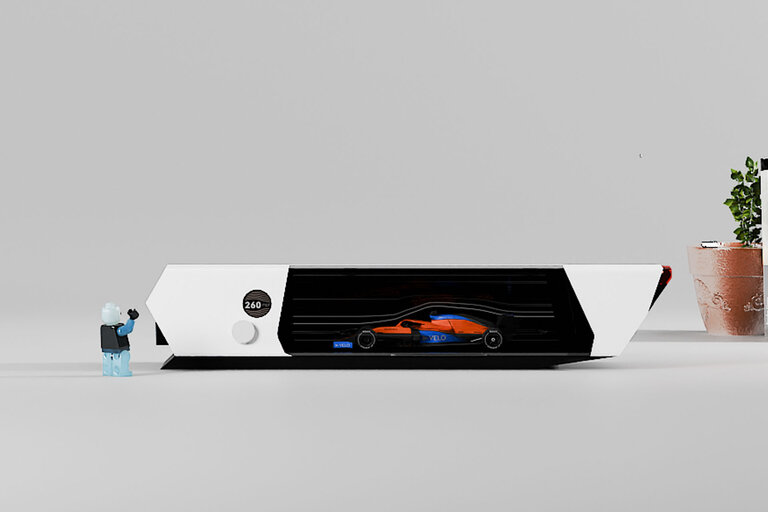
Plug-in hybrids promise to bridge the gap between internal-combustion vehicles and EVs, offering a useful amount of all-electric range along with the ability to gas up and drive straight to Topeka, just like you did in your ’68 Olds 442. That would seem an ideal combination, but seldom do the gasoline and electric sides of a PHEV play equal roles. For the most part, these are gas cars that can periodically impersonate an EV, rather than the other way around. And whether that talent is useful depends on two things: battery capacity and the size of the electric motor (or motors). As for the first part of that equation, the 2022 Kia Sorento PHEV is EPA rated at 32 miles of electric range, which might be enough to take care of your daily driving. But its electric motor makes only 90 horsepower, and therein lies the problem. The whole point of a plug-in hybrid is to use it as an EV as much as possible, but in EV mode the Sorento’s power-to-weight ratio makes a Yugo look like a Ferrari SF90 Stradale.
The Sorento’s electric motor is sandwiched between a 1.6-liter turbocharged four-cylinder and a six-speed automatic transmission, with the team combining for 261 horsepower and 258 lb-ft of torque, a significant boost over the 227 horsepower of the non-plug-in Sorento Hybrid that we tested last year. However, the plug-in’s extra 221 pounds of battery contribute to a curb weight 395 pounds heftier than that of the hybrid, although part of that difference is attributable to the PHEV’s standard all-wheel drive, and the plug-in only comes in the higher SX trim level, too. (The Sorento Hybrid was front-drive only for 2021, although AWD is now available for 2022.) All that extra weight more than offsets the PHEV’s additional 34 horsepower, with the plug-in Sorento running the zero-to-60-mph metric in 7.6 seconds versus the hybrid’s 7.2 seconds. The PHEV also loses the quarter-mile sprint, clocking 15.8 seconds at 89 mph, 0.2 second and 3 mph slower than the Hybrid. It’s likely that an AWD Hybrid would post very similar numbers to the PHEV, but the point remains that you’re not buying the plug-in for performance. A Toyota RAV4 Prime this is not.
So then why would you pay an extra $6800 over an AWD Sorento EX Hybrid? Well, first of all because you can get most of that money back, in the form of a federal tax credit—the PHEV’s 13.8-kWh (11.8 kWh usable) battery qualifies it for a $6587 tax credit. But the other reason is because you plan to plug it in as often as you can and take advantage of the EV mode’s 79 MPGe EPA efficiency estimate. Because once the gas engine is running, the PHEV is no more efficient than the regular hybrid, and in fact a little bit worse—34 mpg EPA combined, to the hybrid’s 35 mpg. Over 600 miles of mixed driving, we averaged an underwhelming 26 MPGe.
To awaken the Sorento’s electric drivetrain, you typically want to force it into EV mode using the EV button on the console. Because, unlike most other PHEVs, the Sorento has a strange disdain for its own electric mode and left to its own devices, will run the gas engine even in light-throttle situations where you’d expect it to rely wholly on its electric power. With its battery charged, the Sorento often ignored its own electric capability and kept the 1.6-liter four humming. Maybe this was because most of our testing took place during cold weather—and it seemed like the only way for it to generate significant cabin heat is to run the engine—but sometimes it wasn’t that cold, and the Sorento would still hoard battery charge for no apparent reason. Other PHEVs, like the Chrysler Pacifica and Ford Escape, will try to use up their available electric range before firing up the gas engine. Which makes sense. That’s why you bought a plug-in, presumably.
The challenge, once you’ve informed the Sorento that you’d prefer electric propulsion, is that now you’ve got 90 horsepower motivating 4490 pounds of Kia. It doesn’t take much throttle to get the gas engine to assist in heaving the oars, and acceleration in EV mode is so gradual you could probably leave your morning coffee on the roof for a few miles if it needs to cool off. In practical terms, the Sorento’s EV mode is something you engage once you’ve attained your cruising speed and you plan to stay there for a while. It does help that the electric motor is upstream from the transmission and thus benefits from multiple gear ratios, but it also feels weird to have upshifts interrupt your silent electric driving, shattering the illusion that this is anything but a mutant internal-combustion vehicle.
The Sorento itself is a slick product, but with so many iterations—2.5-liter naturally aspirated, 2.5-liter turbocharged, 1.6-liter turbocharged hybrid, front-drive and all-wheel-drive, 16 different trims—it’s easy to find variations that make more sense than this one, and for less money. At $49,960 as tested in SX Prestige trim, our Sorento PHEV was even more expensive than a top-of-the-line Telluride, a two-time 10Best winner. It’s nearly $8000 more than the base EV6. If those two fellow Kias represent the best of the past and the promise of the future, then the Sorento PHEV is an avatar for the muddled present—ready to plug in, but still tethered to the pumps.
This content is created and maintained by a third party, and imported onto this page to help users provide their email addresses. You may be able to find more information about this and similar content at piano.io
#Kia #Sorento #PHEV #Motor
Source link





